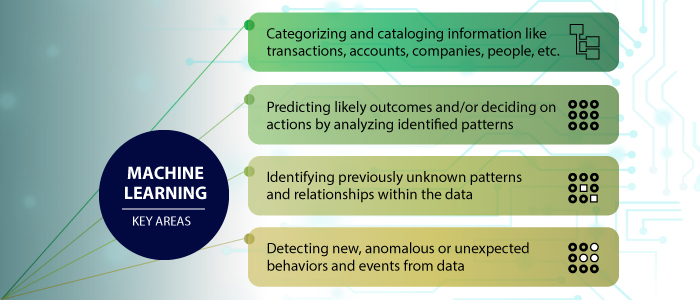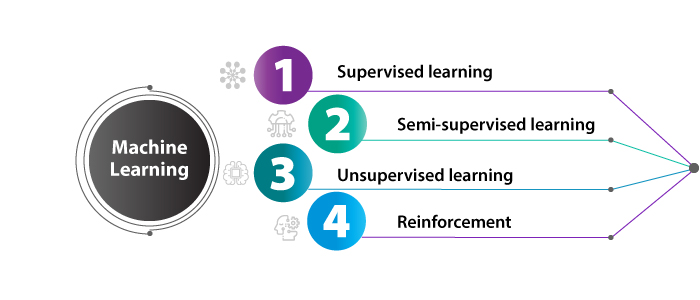At the recent SAPPHIRE NOW and ASUG Annual Conference, Bramasol presented our Comply, Optimize, Transform™ finance innovation approach, which is designed to build on the things that you “have to do” such as Compliance with accounting standards and using those changes to drive Optimization of related business processes. Ultimately, the goal is to leverage the journey through compliance and optimization to achieve Finance Transformation.
In this blog, we are taking a closer look at Machine Learning, which is one of the most important new tools for taking that first step from Compliance to Optimization, while also establishing capabilities to build from for moving from Optimization toward Transformation.
As companies face exponentially growing amounts of data that can overwhelm individuals decision-making ability, the emergence of Machine Learning provides an powerful new method for helping people improve decision-making bandwidth, responsiveness, accuracy and consistency of results.
So what is Machine Learning? It essentially is the ability of software systems to learn by studying data to detect patterns and/or by applying known rules to the data for processing.
Some of the key areas where Machine Learning can help are:
- Categorizing and cataloging information like transactions, accounts, companies, people, etc.
- Predicting likely outcomes and/or deciding on actions by analyzing identified patterns
- Identifying previously unknown patterns and relationships within the data
- Detecting new, anomalous or unexpected behaviors and events from data

Machine Learning software systems use specialized algorithms to understand the data and actions being handled by relevant processes and to learn how to improve those processes. As new observations of data, events, responses and changes in the data environment are analyzed by the algorithms, the machine’s performance is improved and refined.
Therefore, the system is sometimes thought to have “learned” how to do its job better because it is able to continuously improve its measurable results. However, it’s important to always keep in mind that the software system is not autonomously initiating creative actions on its own.
Machine Learning may be able to identify new opportunities or problems needing resolution within the targeted processes and operations but it is not designed to “think outside the lines”. In contrast, true Artificial Intelligence is intrinsically different and goes well beyond Machine Learning in terms of creative problem solving or responding to emerging stimuli. (But that’s a topic for a whole different blog.)
There are four key arenas in which Machine Learning can deliver important results. These include:
- Supervised learning
- Semi-supervised learning
- Unsupervised learning
- Reinforcement
Of these four arenas, the first two, Supervised and Semi-Supervised Learning, tend to fall into the Optimization area and are typified by applications such as Robotic Process Automation (RPA), which is designed to make existing processes faster, more accurate and scalable.
The second two areas, Unsupervised Learning and Reinforcement tend more toward the Transformation arena as they are designed for Machine Learning to extend into new unknown realms and help guide the creation of new capabilities.

Supervised Learning consists of those instances where the software machine is taught by example. In these situations, examples of the desired inputs and outputs are provided to the system and it uses them to determine correlations and logic to deliver the proper answer. This is analogous to teaching children to conduct a math problem by “showing their work” and then helping them to do it faster or to apply the same functions to other problems after you’ve confirmed accuracy of the process.
Semi-supervised Learning goes a step further in that the system is provided with some data that has defined answers and other data that is not labeled with the answers. This approach can be quite helpful for situations where the data set is too large to fully characterize or has subtle variations that can’t be fully defined up front. Semi-supervised learning enables the system to use the provided inputs and outputs in order to extrapolate rules for applying to the rest of the data.
Unsupervised Learning occurs when the machine is used to analyze data sets to identify patterns and determine correlations and relationships. In Unsupervised learning the system cannot be provided with an answer key ahead of time. Instead, the process is modeled along the same lines as how humans naturally observe the world by drawing inferences and grouping similar things together based on the system’s observations. As the system analyzes more data, those observations and inferences become more refined and accurate.
Reinforcement Learning entails providing the machine with a set of allowed actions, rules and potential end states, thereby defining the rules of the game. Then the machine applies those rules to new data sets and explores different actions by observing the results. In essence, the machine learns how best to exploit the rules in order to achieve the desired outcomes.
All of the above scenarios build on the idea that Machine Learning can help us go beyond the abilities of human beings by using the same rules but applying them faster and to larger data sets than people can handle.
In some ways, it’s analogous to the evolution of automobiles and trucks that can carry bigger loads over longer distances and in less time than humans previously could. Even though the journey from Point A to Point B remains the same, the efficiency of carrying larger loads in a faster time-frame makes a world of difference.
Because the models and learning algorithms used in Machine Learning can be very complex, it can be hard for people who aren’t data scientists to understand what Machine Learning is and how it happens.
Again, referring to the automotive analogy, it’s a fact that most of us for the past 100 years have learned to drive cars without needing to understand the inner-workings of the engine, transmission and steering systems. As long as we know which dials to watch and which levers to pull, we can accomplish much more than we could by hand or on foot. In a similar manner, many companies are adopting Machine Learning to optimize both the handling of huge numbers of repetitive tasks and provide adaptive analysis for applying rules to new data sets and emerging conditions.

